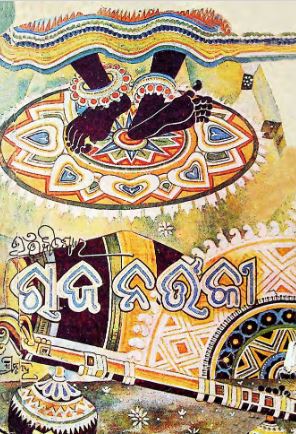Raj Nartaki, a distinguished play by esteemed Odia playwright Bhanjakisor Patnaik, was first published in 1961 and has since become a cornerstone of contemporary Odia literature. This play is a rich tapestry of historical drama and profound philosophical themes, set against the backdrop of the cultural and artistic milieu of ancient Odisha. With its striking narrative and evocative characters, “Raj Nartaki” explores the intricate interplay of power, love, sacrifice, and the arts in a society deeply rooted in tradition.
The plot of “Raj Nartaki” revolves around the life of a royal dancer, or “Nartaki,” who embodies both grace and strength. Set in the palatial courts of a king, the story unfolds as the Nartaki finds herself at the center of political intrigue and emotional turmoil. The play delves into the relationship between the Nartaki, the king, and other influential characters, revealing how personal desires collide with duty and governance. Through her art, the Nartaki symbolizes not just beauty, but also the soul of the kingdom, capturing the hearts of both the king and the people.
As the narrative progresses, the Nartaki faces the challenge of balancing her artistic aspirations with the expectations imposed on her by the royal court. She is torn between her dedication to her craft and the political machinations surrounding her. The play artfully portrays her struggle for autonomy, as she seeks to assert her identity in a world dominated by male authority and societal norms.
One of the central themes of “Raj Nartaki” is the tension between art and authority. The play explores how the arts can be a powerful medium for resistance and expression, allowing the Nartaki to challenge the limits placed upon her by society. Bhanjakisor Patnaik uses the character of the Nartaki to comment on the broader role of women in society, highlighting their resilience and potential for empowerment through self-expression.
Additionally, the play explores the idea of sacrifice, particularly in the context of love and loyalty. The emotional depth of the Nartaki’s relationships with the king and other characters illuminates the sacrifices made in the name of love and duty, offering a poignant commentary on the complexities of human emotions.
The characters in “Raj Nartaki” are richly developed, each embodying distinct facets of the human experience. The Nartaki stands out as a multi-dimensional figure—both a celebrated artist and a symbol of defiance. The king, with his own struggles for power and authority, serves as a foil to the Nartaki, ultimately questioning the nature of leadership, love, and the sacrifices that accompany them.
Patnaik’s deft character portrayals ensure that the audience is drawn into their individual journeys, eliciting empathy and reflection. The dialogue is both poetic and poignant, enhancing the emotional resonance of the story while capturing the lyrical beauty of the Odia language.
Raj Nartaki is more than just a play; it is a profound exploration of the human spirit and the bonds that tie individuals to their art, society, and one another. Bhanjakisor Patnaik’s masterful storytelling and deep philosophical inquiries ensure that this work remains relevant and impactful, resonating with audiences on both emotional and intellectual levels. It stands as a timeless reflection of the cultural heritage of Odisha and the universal quest for identity, autonomy, and artistic expression. Through “Raj Nartaki,” Patnaik invites readers and theatergoers alike to ponder the intricate dynamics of power and creativity, leaving an indelible mark on the landscape of Odia literature and drama.
Books Info
| Books name | Raj Nartak |
| Author | Bhanjakisor Patnaik |
| No Of pages | 173 |
| Publisher | Pustaka Bhandara |
| Publication | 1961 |
| Printed At | New Stores Press |
| Distributor | NA |

